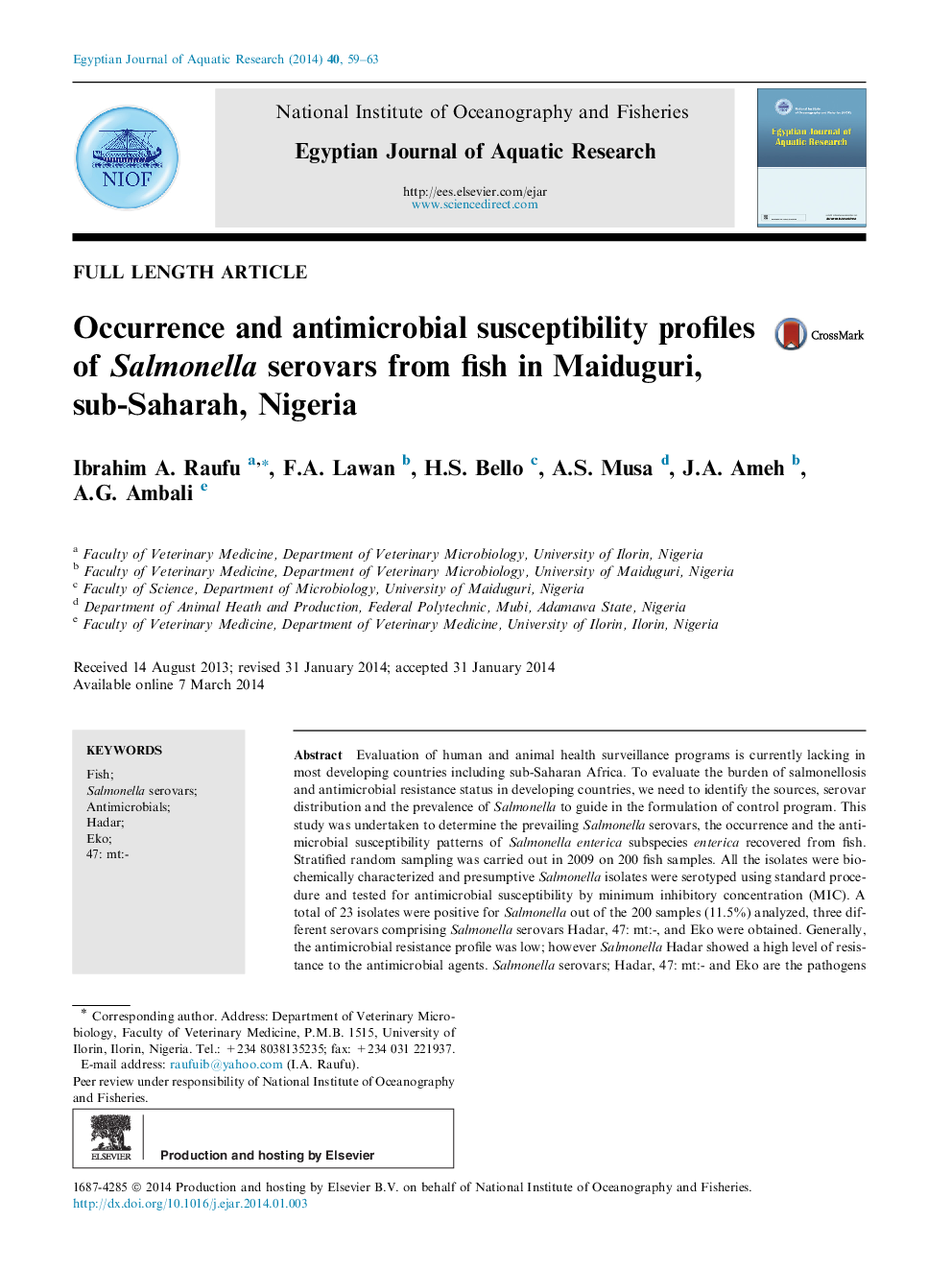| Article ID | Journal | Published Year | Pages | File Type |
|---|---|---|---|---|
| 4493207 | The Egyptian Journal of Aquatic Research | 2014 | 5 Pages |
Evaluation of human and animal health surveillance programs is currently lacking in most developing countries including sub-Saharan Africa. To evaluate the burden of salmonellosis and antimicrobial resistance status in developing countries, we need to identify the sources, serovar distribution and the prevalence of Salmonella to guide in the formulation of control program. This study was undertaken to determine the prevailing Salmonella serovars, the occurrence and the antimicrobial susceptibility patterns of Salmonella enterica subspecies enterica recovered from fish. Stratified random sampling was carried out in 2009 on 200 fish samples. All the isolates were biochemically characterized and presumptive Salmonella isolates were serotyped using standard procedure and tested for antimicrobial susceptibility by minimum inhibitory concentration (MIC). A total of 23 isolates were positive for Salmonella out of the 200 samples (11.5%) analyzed, three different serovars comprising Salmonella serovars Hadar, 47: mt:-, and Eko were obtained. Generally, the antimicrobial resistance profile was low; however Salmonella Hadar showed a high level of resistance to the antimicrobial agents. Salmonella serovars; Hadar, 47: mt:- and Eko are the pathogens associated with fish contamination in Maiduguri, North eastern Nigeria and constitute serious health risks for the human population and need to be controlled by targeted interventions.
